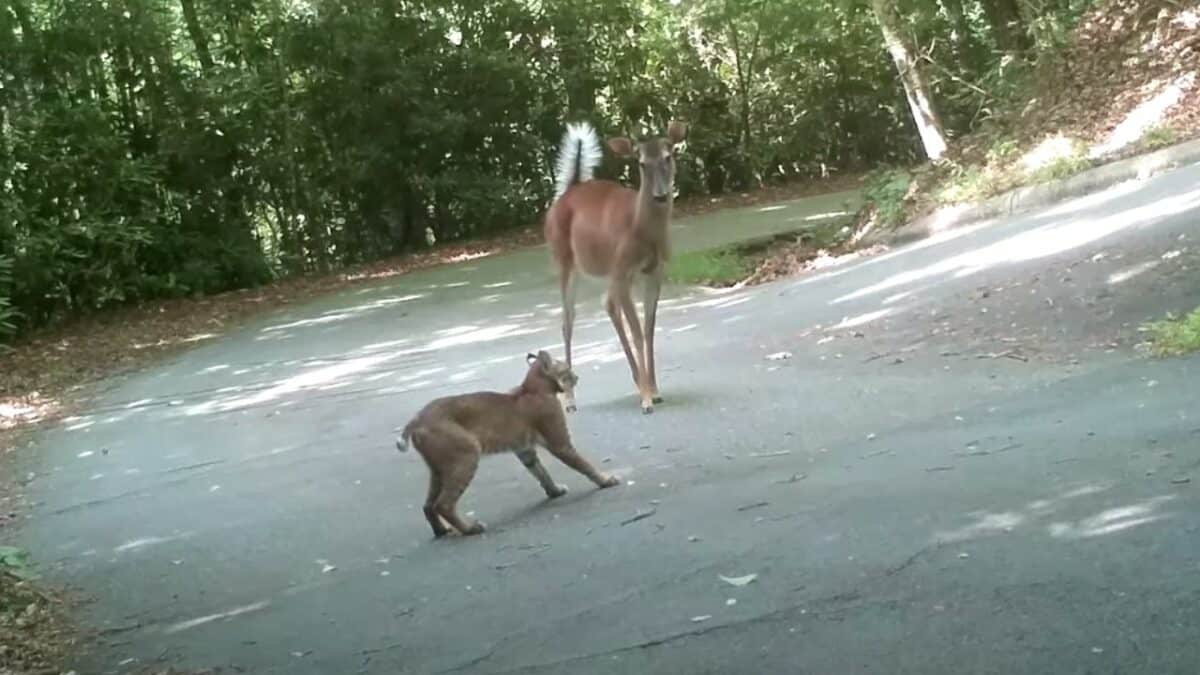In the heart of a wildlife area forest, a captivating scene unfolds as a deer cautiously approaches a bobcat on the road. This encounter between two iconic inhabitants of the wilderness offers a glimpse into the delicate balance of nature’s ecosystem.
As the deer and bobcat lock eyes, a palpable tension fills the air. Both creatures stand their ground, displaying a mutual respect for each other’s territory. Despite their instinctual urge to protect themselves, they refrain from engaging in direct combat, perhaps recognizing the futility of such a confrontation.
Instead, a silent standoff ensues, each participant assessing the other with a mixture of curiosity and wariness. It’s a mesmerizing moment, a testament to the intricate dynamics of the natural world.
Let’s explore the physical characteristics of the deer…
Size Of Deer
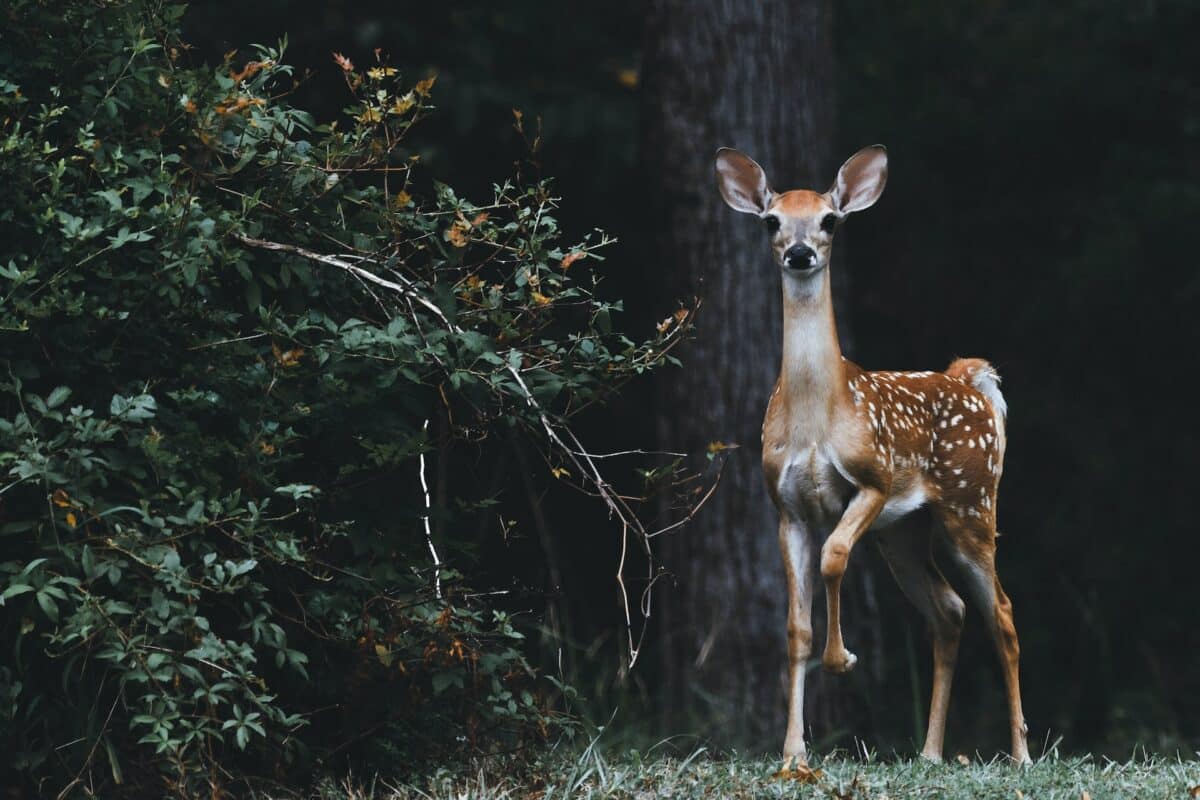
Deer are typically medium to large-sized mammals, with adult males (bucks) being larger than females (does).
Height
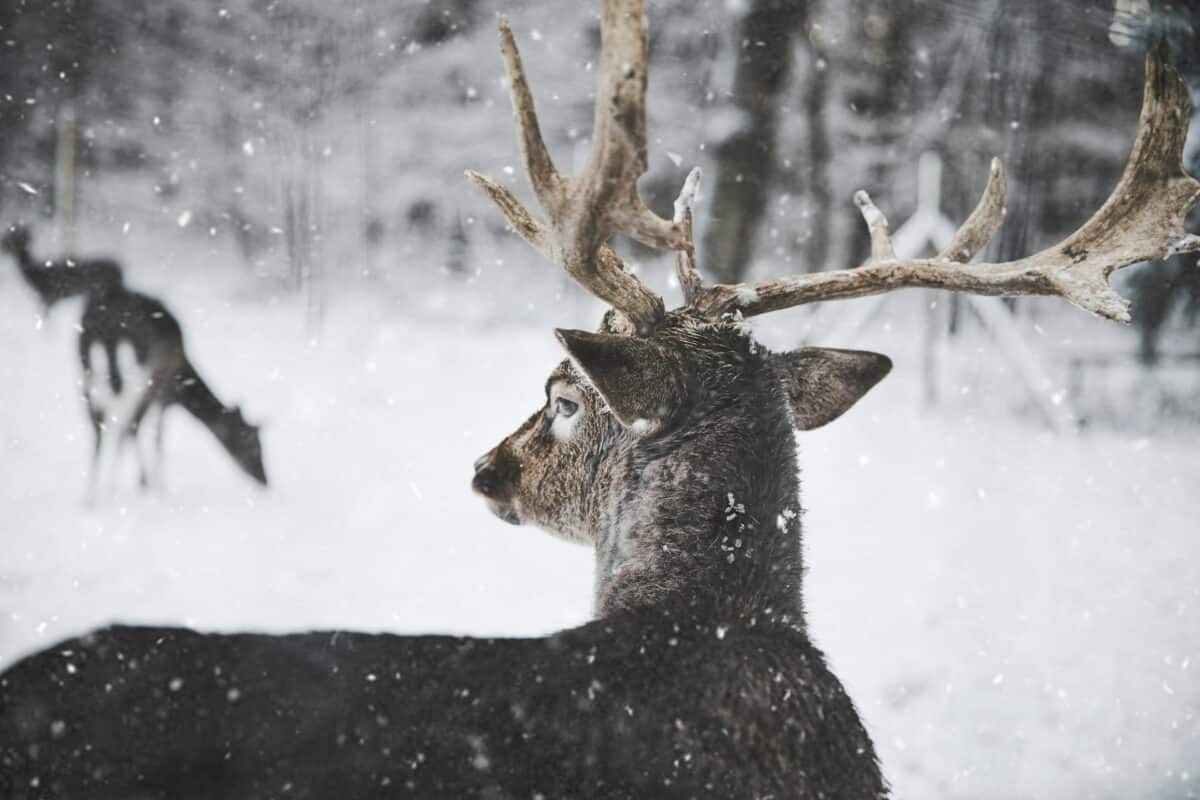
Depending on the species, deer can stand anywhere from 2 to 7 feet tall at the shoulder.
Horns
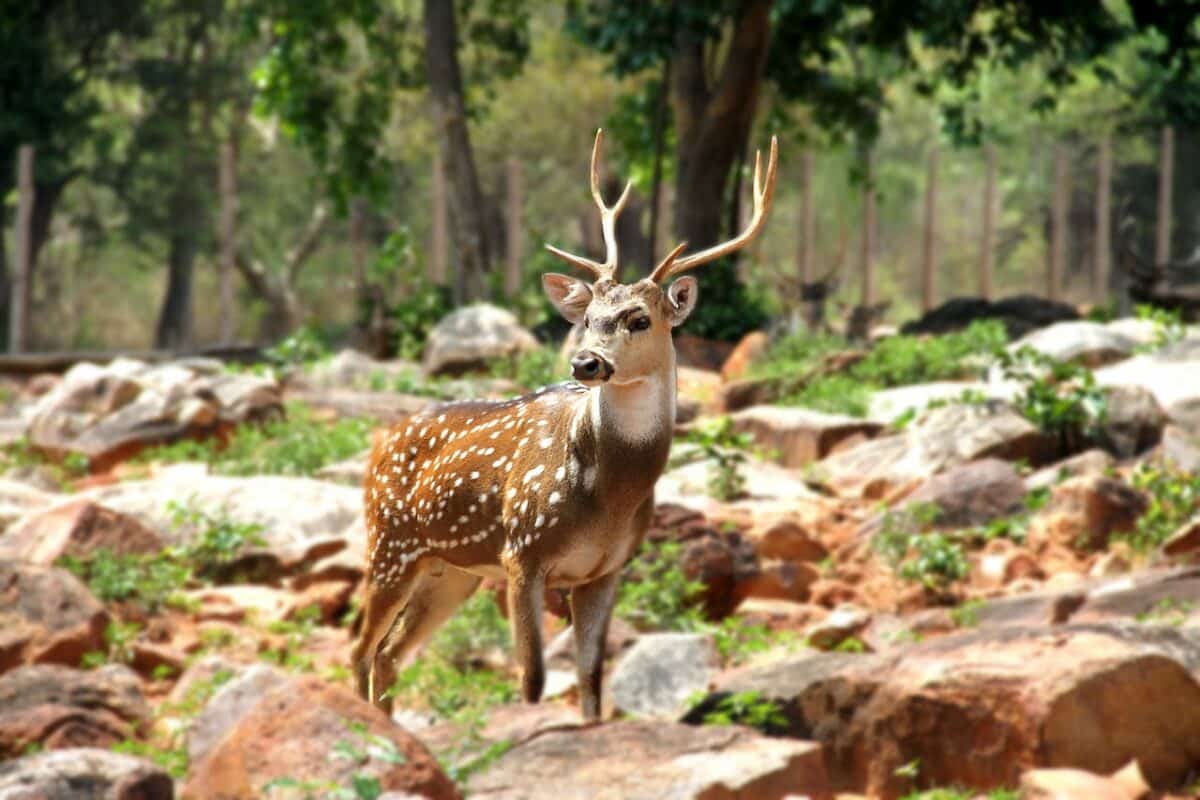
Most species of deer, such as white-tailed and mule deer, possess antlers, which are branched structures made of bone and shed annually.
Coat Color
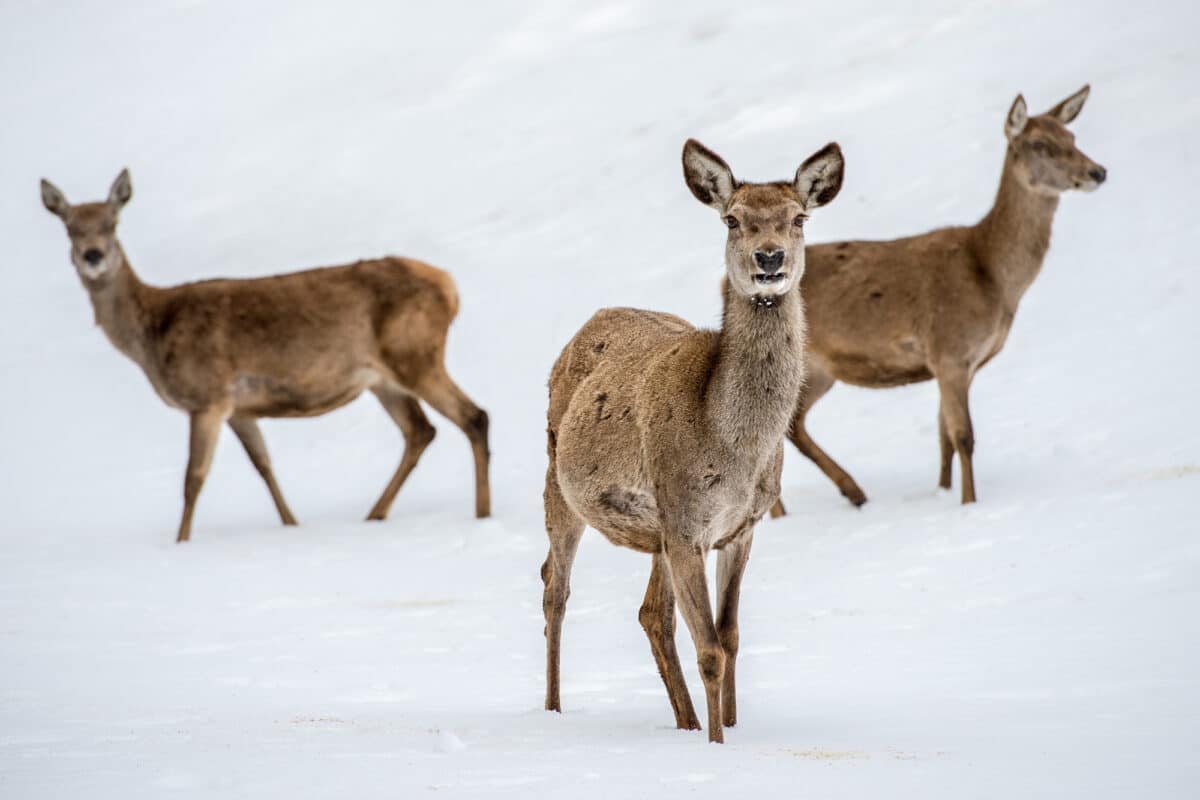
Deer exhibit a range of coat colors depending on the species and the season. Common colors include brown, gray, and reddish-brown, with variations in shading and patterning.
Eyes
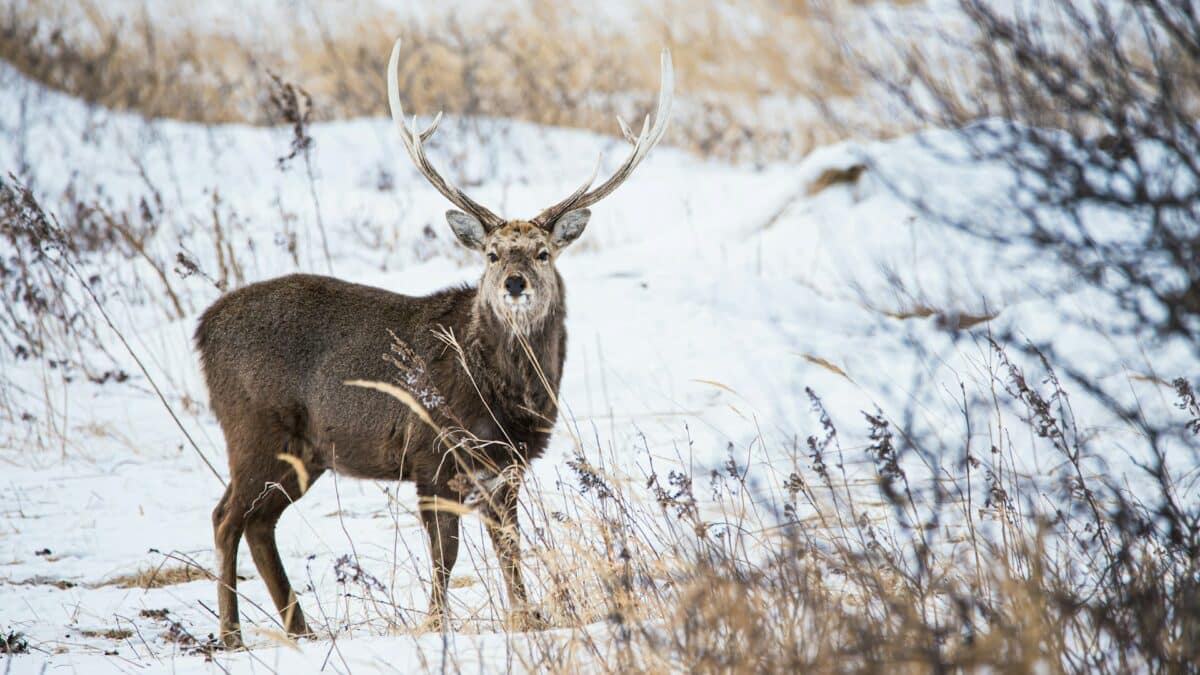
Deer have large, dark eyes positioned on the sides of their head, providing them with a wide field of vision to detect potential predators.
Secondly, let’s find out about the physical characteristics of the Bobcat:
Size Of A Bobcat

Bobcats are medium-sized wildcats, smaller than their larger relatives such as cougars and lynxes. On average, adult bobcats stand about 20 to 24 inches (50 to 60 centimeters) tall at the shoulder. They typically measure around 2 to 3 feet (60 to 90 centimeters) in length, not including their short, stubby tail, which adds an additional 4 to 7 inches (10 to 18 centimeters).
Height & Weight
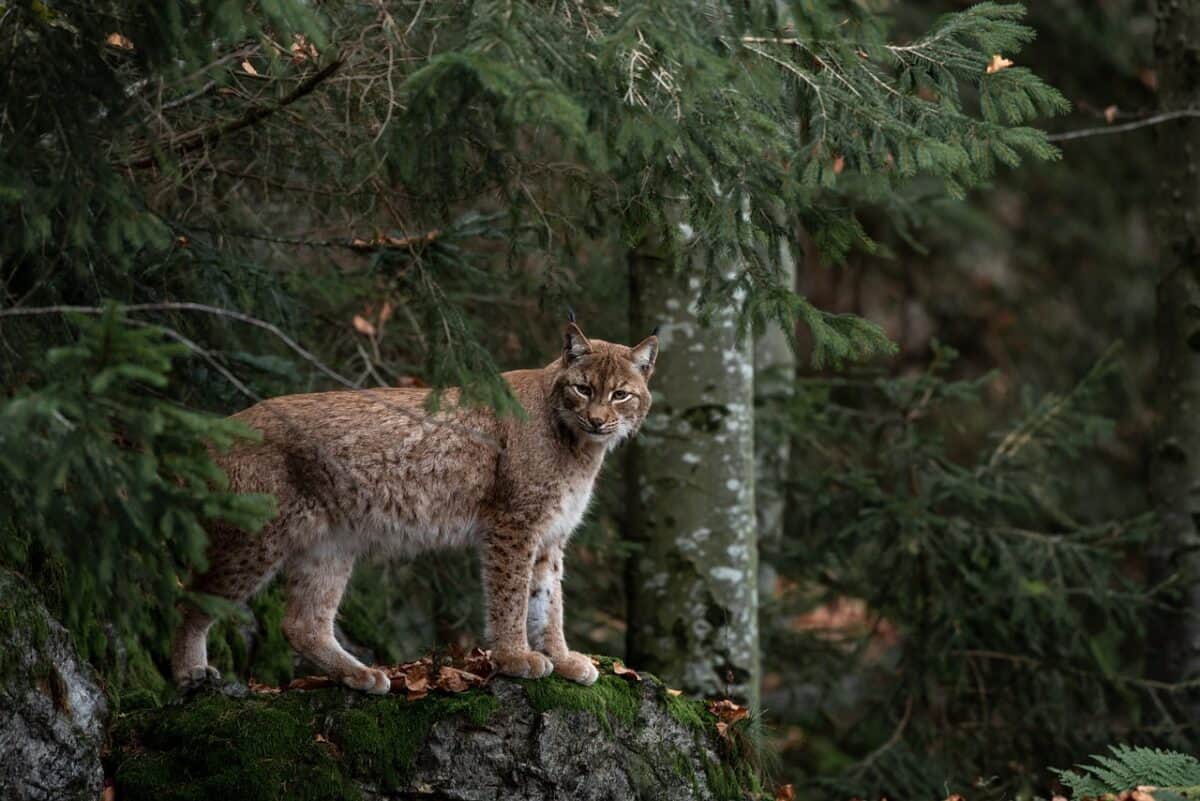
On average, bobcats stand around 2 feet tall at the shoulder. In terms of weight, adult bobcats usually range from 15 to 35 pounds (7 to 16 kilograms), with males generally being larger and heavier than females.
Physical Features
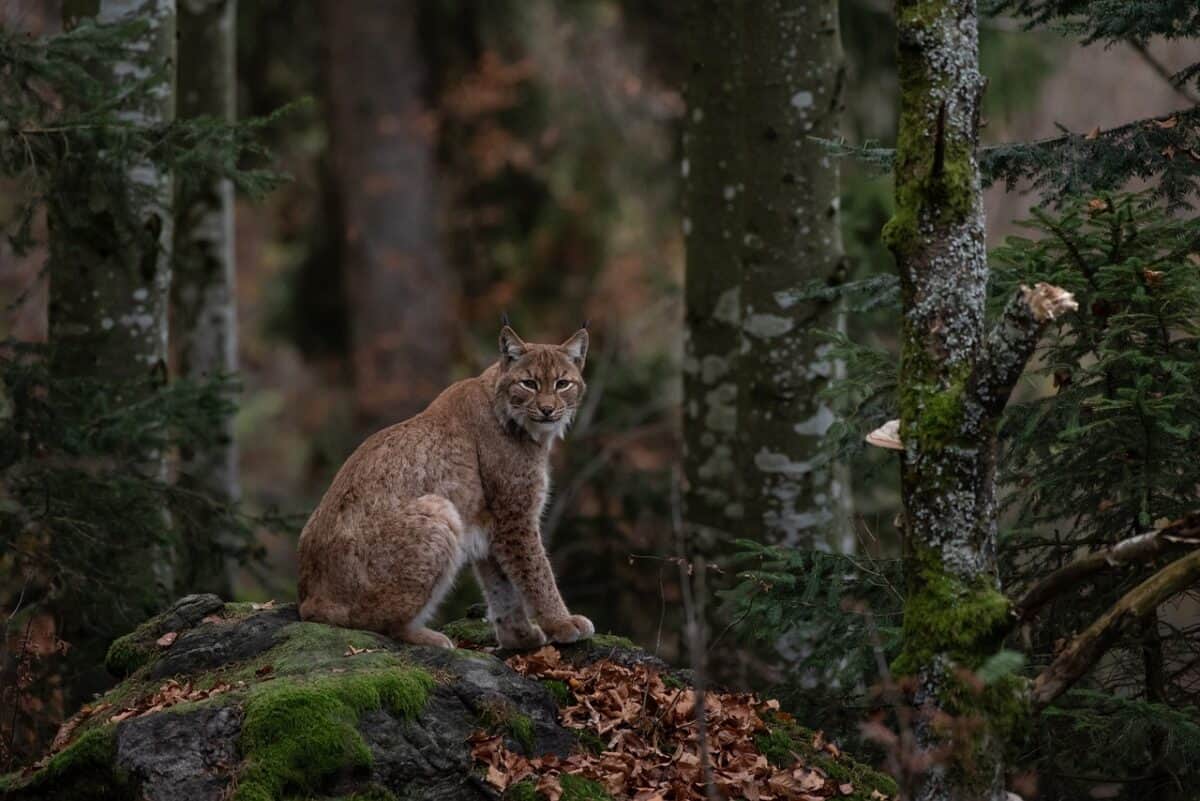
Bobcats have distinctive tufted ears, short tails, and a spotted coat that provides excellent camouflage in their woodland habitats.
Paw Size and Claws
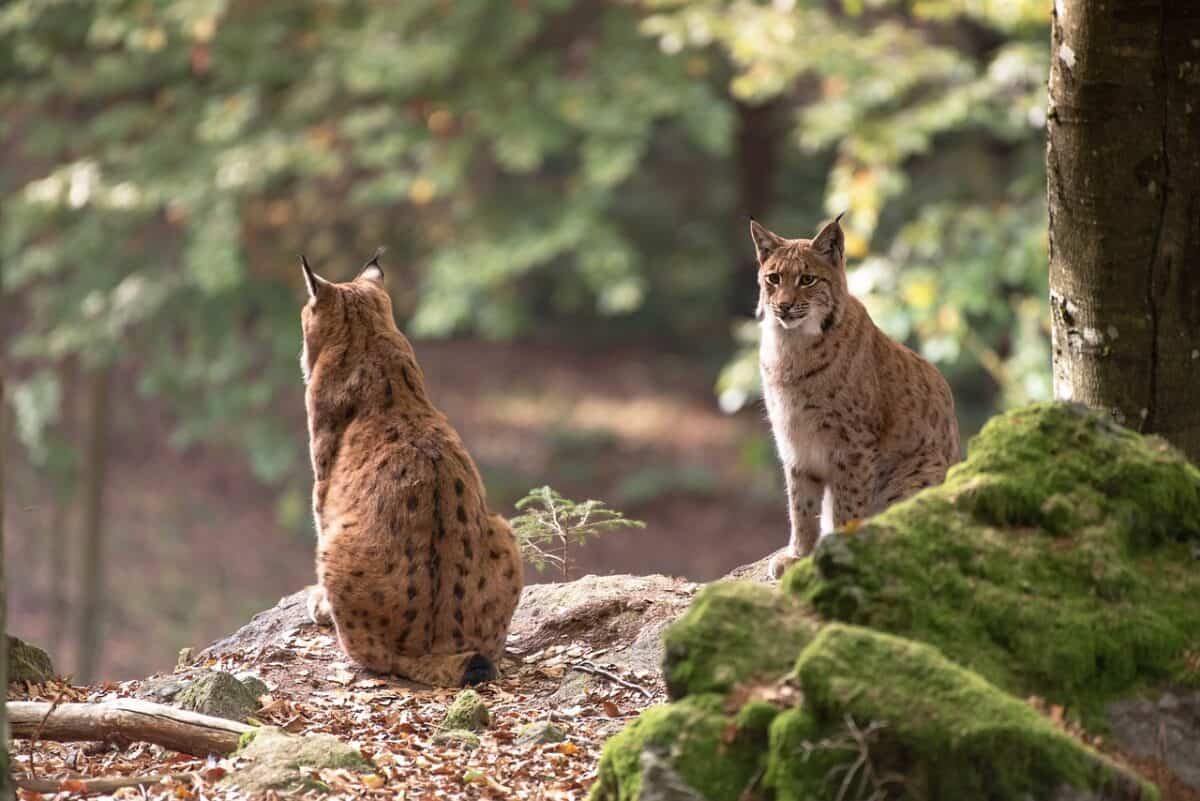
Bobcats have relatively large paws equipped with sharp retractable claws, which they use for climbing, hunting, and defending themselves.
Facial Markings
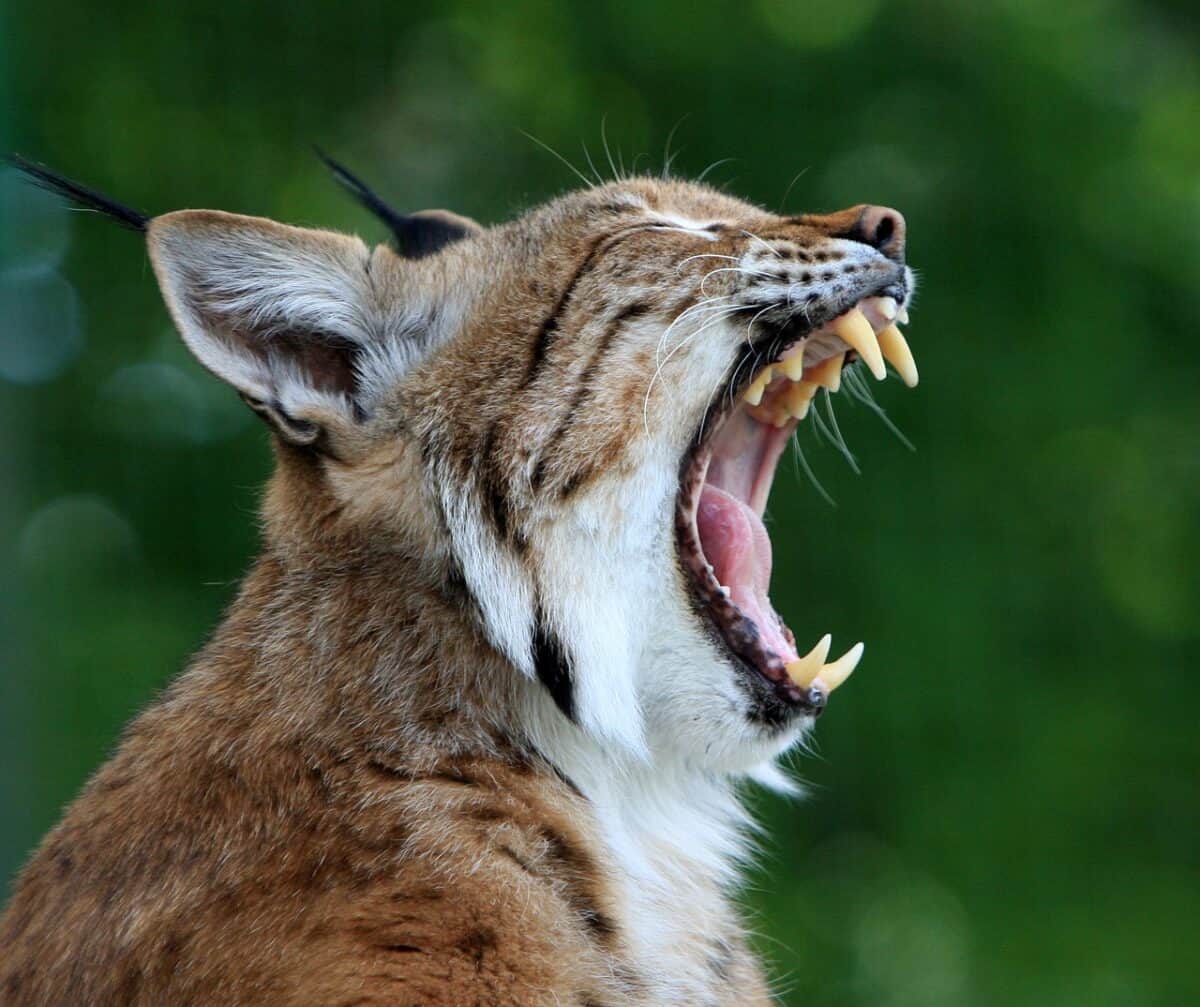
Bobcats typically have distinct facial markings, including dark lines running from their eyes down to their muzzle, enhancing their camouflage and giving them a fierce appearance.
Despite their differences in appearance and behavior, both the deer and the bobcat play integral roles in maintaining the ecological balance of their environment. Each species contributes to the intricate web of life, ensuring the health and vitality of the ecosystem they call home.
Bottom Line
As the standoff between the deer and bobcat comes to an end, they slowly part ways, each retreating into the depths of the forest. It’s a reminder of the awe-inspiring beauty and resilience of the natural world, where every encounter serves as a testament to the wonders of creation.
Thanks for reading along, for more, check out our related article link below.
Next up:
Join our Forum for free today!

- Huge Pet Bison Breaks Into House - July 22, 2024
- Giant Black Bear Surprises Beachgoers by Emerging from the Ocean in Florida - July 22, 2024
- Brave Man Plays Instrument While Huge Bear Caresses His Shoulder - July 22, 2024

